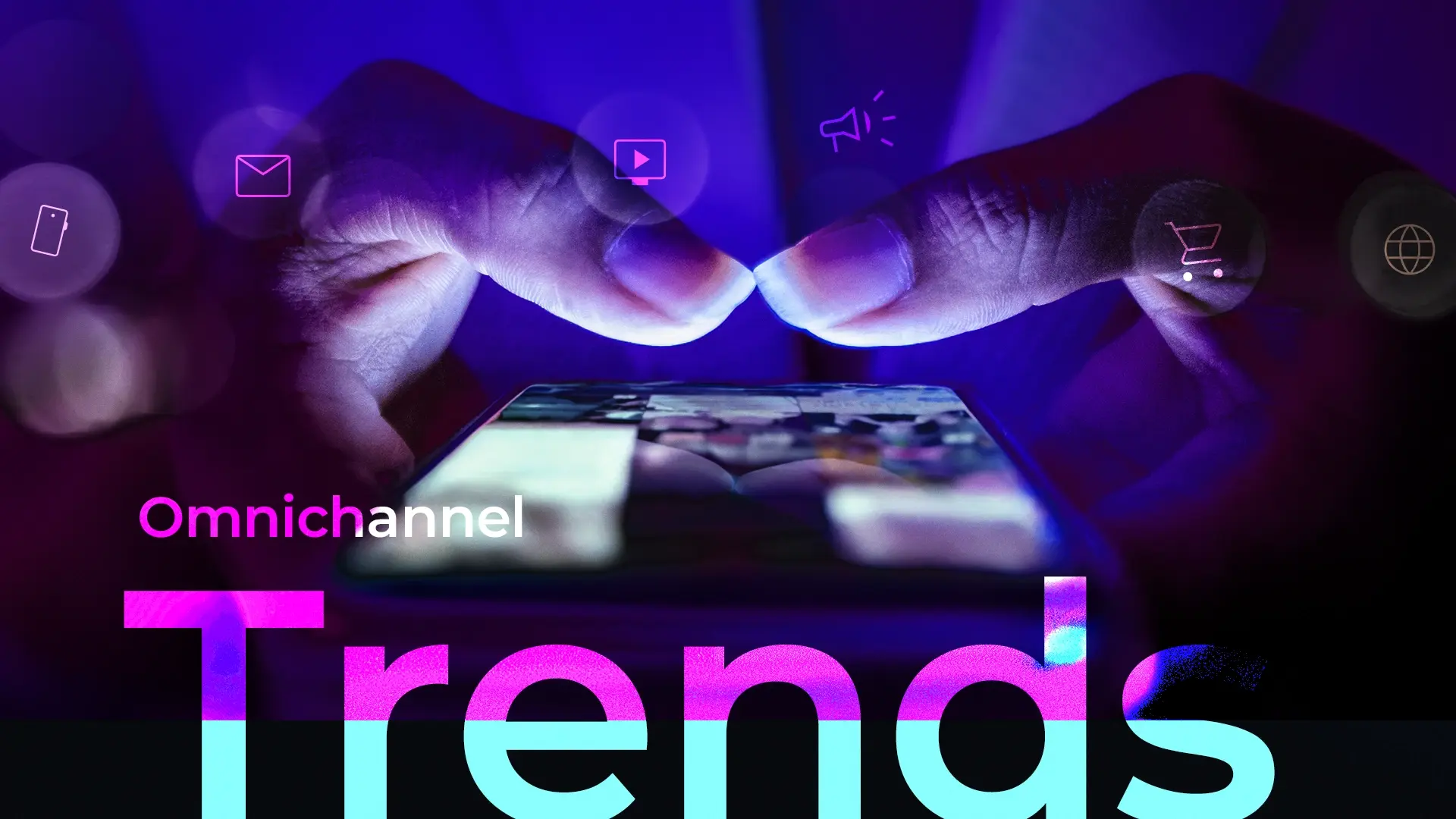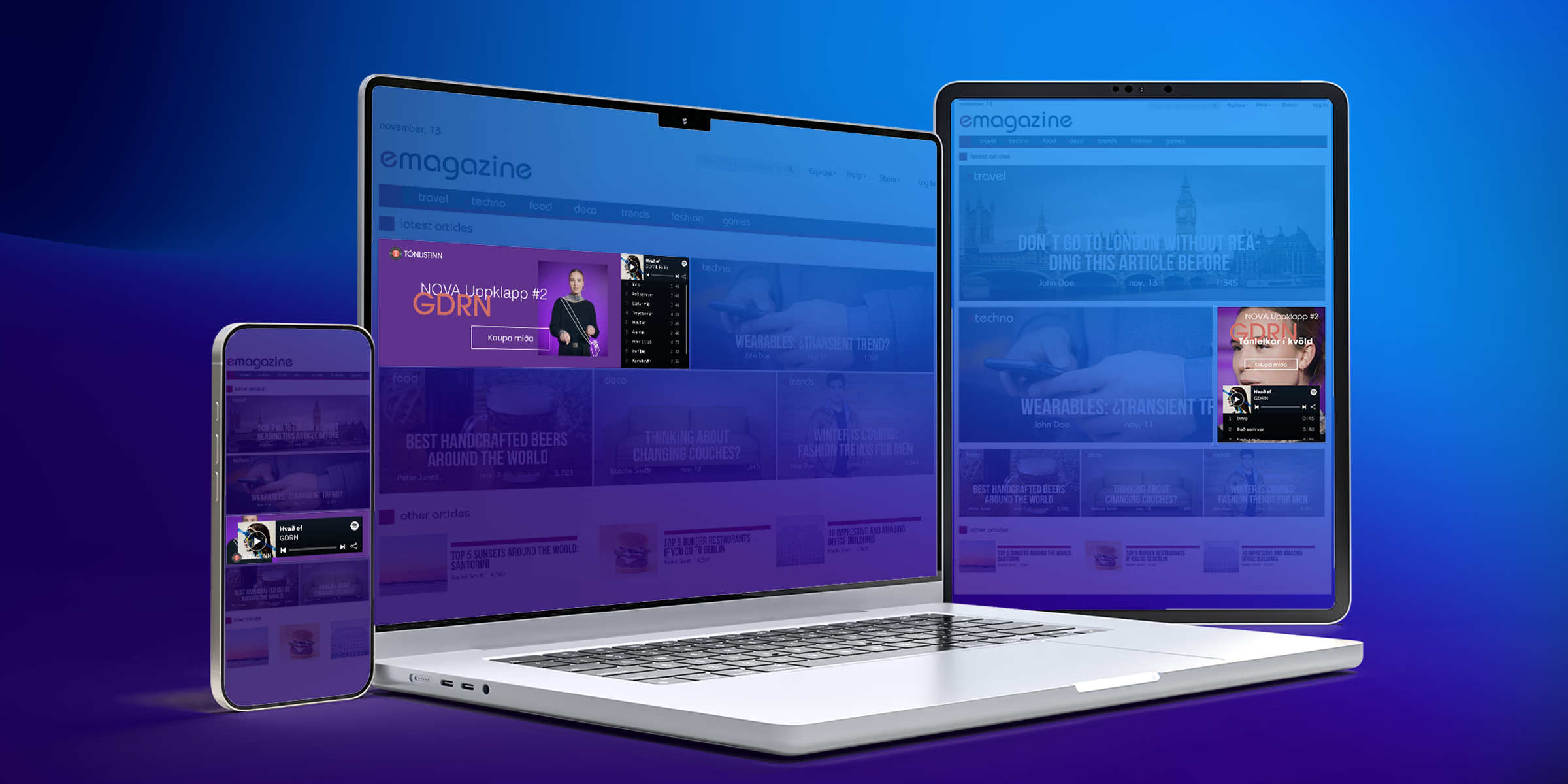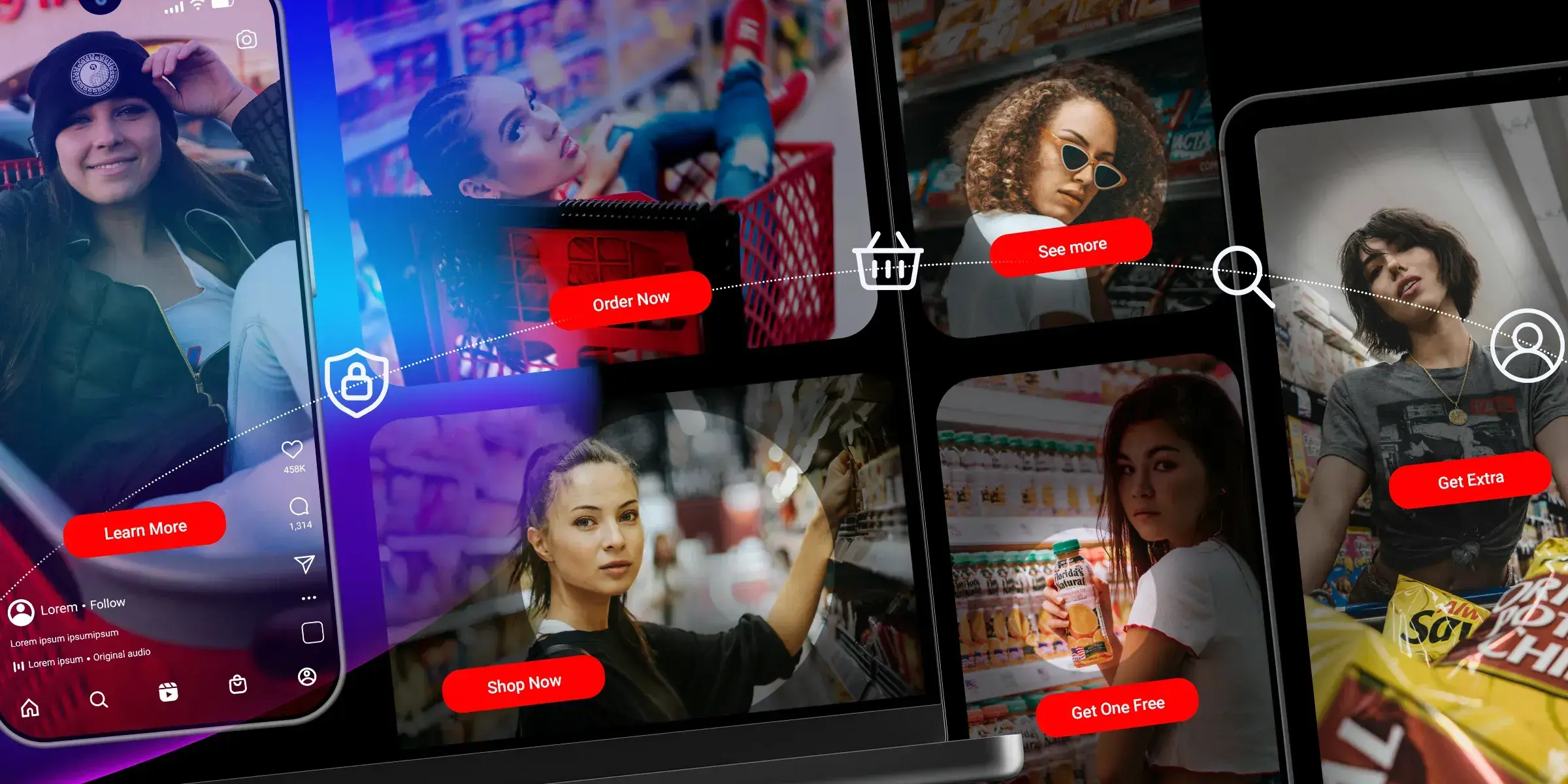In the modern business landscape, where brands compete for attention, hyperpersonalization has emerged as a game-changer. It’s the new way companies engage with their customers, offering tailored experiences that resonate on an individual level. In this comprehensive guide, we delve into the depths of hyperpersonalization, exploring its essence, why it's trending, how to integrate it successfully, and highlighting pioneering examples that illuminate its power.
A Better Strategy for Tailored Experiences
Hyperpersonalization is a new customer engagement approach that goes beyond traditional marketing. It utilizes data-driven insights and cutting-edge technologies to create personalized experiences for each customer. Unlike generic mass marketing approaches, hyperpersonalization recognises the unique preferences, behaviors, and needs of individuals, delivering relevant content, products, and services at the right time and through the right channels.
The journey of hyperpersonalization begins with data collection. To gather key insights into customer behaviour and preferences, you might want to analyze various touchpoints, such as website interactions, social media engagement, purchase history, and demographic information. Advanced analytics and artificial intelligence algorithms then can help uncover patterns, predict future actions, and segment customers into distinct personas.
Businesses can then tailor every aspect of the customer journey by using the acquired data to create a personalized and seamless experience across multiple channels. This can help foster stronger connections, drive customer loyalty, and boost revenue.
What is Hyperpersonalization?
We all love personalization, which customises experiences, products, or services to meet specific needs and preferences of our customers. It typically relies on demographic data, basic customer preferences, and historical interactions to deliver targeted content or recommendations. You may notice though that this customization is superficial. Marketing emails and website pages addressing customers by name, product recommendations based on past purchases ("Customers who bought this item also bought..."), promotions based on broad demographic characteristics… Personalization now goes far beyond just using customers’ names in emails.
Hyperpersonalization takes personalisation to a deeper level. It tailors experiences at an individual level using data analytics, AI, and real-time insights. Far beyond demographic data and surface-level preferences. The aim? To create seamless, relevant, highly targeted and individualised experiences across multiple touchpoints, anticipating customer needs and preferences before they even express them. A little like reading their minds, right?
Then, you can optimize your dynamic content based on real-time user behavior. Think of a website where the content is adjusted based on your recent browsing history and current session behavior. Changed preferences? Your personalized product recommendations will evolve accordingly, and marketing messages and promotions you get will count in contextual factors such as where you are, what time it is, and if it’s raining there.
Key Differences in Short:
Granularity: Personalization operates at a broader level, targeting customer segments or basic preferences, while hyperpersonalization drills down to the individual level, delivering tailored experiences based on real-time insights and behaviors.
Real-Time Insights: Hyperpersonalization relies on real-time data and predictive analytics to anticipate and respond to individual customer needs in the moment, whereas personalization often relies on static data and historical interactions.
Scope of Customisation: Hyperpersonalization covers a wider range of touchpoints and interactions, offering a more holistic and integrated approach to customization compared to the relatively narrow focus of personalization.
Level of Automation: Hyperpersonalization often involves greater automation and reliance on AI-driven algorithms to analyze data, predict outcomes, and deliver personalized experiences at scale, whereas personalization may involve more manual segmentation and targeting efforts.
Why is Hyperpersonalisation on the rise?
Why is Hyperpersonalization on the rise?
It’s no coincidence that hyperpersonalization is on the rise. This trend can be attributed to a powerful combination of several converging factors. Firstly, today’s consumers have unprecedented access to information and options, raising their expectations for personalized interactions. Answering this, 69% of business leaders are increasing their investment in personalization despite challenging economic times. When attention is scarce and competition is fierce, brands that fail to deliver relevant, tailored experiences risk being sidelined.
Advances in technology, like democratisation of data analytics and artificial intelligence, have made hyperpersonalization accessible to businesses of all sizes. Nowadays, more than 9 in 10 companies (92%) are using AI-driven personalization to drive growth in their business. Cloud computing, machine learning, and automation tools have enabled us to process vast amounts of data in real-time, uncovering actionable insights and delivering personalized experiences at scale.
The demand for hyperpersonalization is also growing. Millennials and Gen Z, in particular, prioritize authenticity, customization, and experiences over traditional advertising. They seek brands that understand them on a deeper level and offer personalized solutions making them feel more individual.
For businesses, it’s an investment that’s sure to repay. In its recent report, McKinsey states that companies that increased market share by more than 10% a year were investing in hyperpersonalization technologies such as chatbots. As competition in digital marketing increases, personalized marketing provides opportunities for organizations to engage customers in meaningful ways, deepen existing relationships, build new ones and enhance the overall customer experience. Here are other benefits.
Maximized Revenue:
- Content generation based on data analysis
- Precise targeting of products
- Engine for suggesting the next best action or recommendation
- Personalized or adaptable pricing
Cost reduction:
- Decreased costs associated with acquiring and retaining customers
- Automation of workflows
Enhanced Customer Experience:
- Customer journeys tailored to the moment
- Personalized customer service available 24/7
- Segmentation of customers in real-time
- Dynamic websites and landing pages
Building Blocks of Hyperpersonalization: A Step-by-Step Guide
While the promise of hyperpersonalization is enticing, its successful implementation requires a strategic, customer-centric approach. Here are the key steps to integrate hyper-personalization effectively into your business:
Collect and Understand Your Data: Invest in reliable data collection tools to gather relevant customer insights across multiple touchpoints. Utilize analytics tools and AI algorithms to analyze this data and derive actionable insights.
Segment and Develop Personas: Segment your audience based on demographics, behavior, preferences, and psychographics to create distinct customer personas. Tailor your marketing strategies and messaging to resonate with each persona's unique characteristics and needs.
Personalize Content and Recommendations: Use dynamic content and product recommendation engines to deliver personalized experiences across your website, email campaigns, and digital advertising. Consider utilizing AI-powered algorithms to predict the needs of customers in real time.
Integrate across All Channels: Make sure your message is consistent across all customer touchpoints: websites, mobile apps, social media, and physical locations. Seamlessly integrate data and insights across channels to deliver a cohesive and personalized experience at every interaction.
Optimise & Iterate: Continuously monitor and analyze the performance of your hyperpersonalization efforts. Use A/B testing, customer feedback, and analytics to refine your strategies, iterate on personalized experiences, and stay responsive to evolving customer preferences.
Great Examples of Hyperpersonalization
Several trailblazing companies have embraced hyperpersonalization to ensure long-term consumer engagement.
Amazon has developed its own recommendation engine, commonly referred to as “Amazon Personalize”. It analyzes users' browsing history, purchase behavior, and preferences so that Amazon tailors product recommendations that are highly relevant to each user. This hyperpersonalized approach enhances user experience, increases customer engagement, and drives higher conversion rates—both internally at Amazon and among external users. See how FOX Sports experienced a 400% increase in post-event viewership content.
Netflix collects vast amounts of data from billions of item ratings, millions of daily item streams, rich metadata, social data, millions of daily queries, external data sources, and user interactions to optimize its recommendations. With this data, Netflix has improved its recommendation systems so that 75-80% of what people watch is from their recommendations.
Spotify: Spotify's personalized playlists, such as Discover Weekly and Release Radar, use machine learning algorithms to curate music recommendations based on user listening habits, preferences, and peer comparisons. But this is not all. Who hasn't heard of Spotify Wrapped, a yearly personalized report sent to subscribers that highlights their music consumption over the past year? Users receive information on their top 5 most listened-to artists, the total time spent listening, and more. This allows each user to become the main character of their own story, which they are eager to share. In 2023, social media platforms saw over 60 million shares of stories and graphics related to Spotify Wrapped. Spotify also sends Wrapped reports to its creators. Artists use this content to thank fans on social media, further increasing Spotify’s reach.
Starbucks’ mobile app integrates customer data, location-based services, and order history to personalize offers, promotions, and recommendations, enhancing the in-store and digital ordering experience. The Starbucks app uses AI to suggest personalized food and drinks based on individual purchase history and preferences. The company has come up with a fun way to engage loyalty program members through personalized games on email and mobile. Also, the mobile app now helps you find nearby stores that accept the Mobile Order & Pay option. The result? 3X increase in incremental spends via offer redemptions.
What is the Future of Hyperpersonalisation?
No doubt the future of hyperpersonalization is bright. By leveraging advanced technologies, embracing ethical practices, and staying attuned to evolving consumer expectations, businesses can unlock the full potential of hyperpersonalization to drive customer engagement, satisfaction, and loyalty in the years to come.
Enhanced AI and Machine Learning: As AI and machine learning algorithms become more sophisticated, hyperpersonalization will become even more accurate and predictive. Advanced AI will enable businesses to analyze vast amounts of data in real-time, uncovering deeper insights into individual preferences and behaviors.
Augmented Reality (AR) and Virtual Reality (VR): AR and VR technologies offer exciting possibilities for hyperpersonalization, allowing businesses to create immersive and interactive experiences tailored to individual preferences. From virtual try-on experiences to personalized virtual tours, AR and VR will revolutionize how brands engage with customers.
IoT and Wearable Devices: The Internet of Things devices and wearable technology present new opportunities for hyperpersonalization. Smart devices like smartwatches, fitness trackers, and home automation systems provide deeper insights into customer behavior, allowing us to personalize experiences based on real-time data.
Voice and Conversational Interfaces: Voice-enabled devices and conversational interfaces are transforming how customers interact with brands. Hyperpersonalization will extend to voice-based interactions, with AI-powered virtual assistants delivering personalized recommendations, assistance, and support tailored to individual preferences and contexts.
Hyperpersonalization Beyond Marketing: While hyperpersonalization is often associated with marketing and customer engagement, its applications extend far beyond. From personalized healthcare interventions to customised learning experiences, hyperpersonalization will revolutionize various industries, offering tailored solutions that meet individual needs and preferences.
Navigating Ethical and Privacy Considerations
As the third-party data phase out, what are the new ethical standards to obtain user data? Due to limitations on traditional data sources, businesses must explore alternative avenues for gathering consumer insights. For example, leveraging first-party data more effectively and considering ethical implications when using other data sources.
Hyperpersonalization raises several ethical concerns that need to be addressed. While providing personalized experiences to their consumers, companies must respect their privacy rights, consider transparency, consent, and data security.
One of the primary concerns is obtaining informed consent from users as it involves collecting and utilizing user data. Therefore, it is essential to be transparent about data usage.
Another ethical concern related to hyperpersonalization is privacy. There’s a fine line between delivering personalized content and respecting users' privacy rights. Striking this balance is critical to building trust with the audience.
Generative AI plays a significant role in hyperpersonalization. However, the algorithms driving this technology can inadvertently introduce biases. Stay conscious of these biases to ensure fair and equitable content delivery.
Finally, with the rise of cyber threats, ensuring the security of user data has become a pressing ethical concern. Organisations must prioritize robust cybersecurity measures to safeguard the information collected for hyperpersonalization.
Conclusion
Hyperpersonalization is the most effective way to ensure long-term customer engagement, helping businesses connect with them on a deeper, more meaningful level. By leveraging data-driven insights, advanced technologies, and customer-centric strategies, companies can deliver tailored experiences that resonate with individuals, drive loyalty, and fuel growth in an increasingly competitive marketplace. We are in the early stages of the hyperpersonalization era, and businesses that adopt this transformative approach will thrive.
Sign up for practical insights and tips to enhance your digital marketing efforts.







